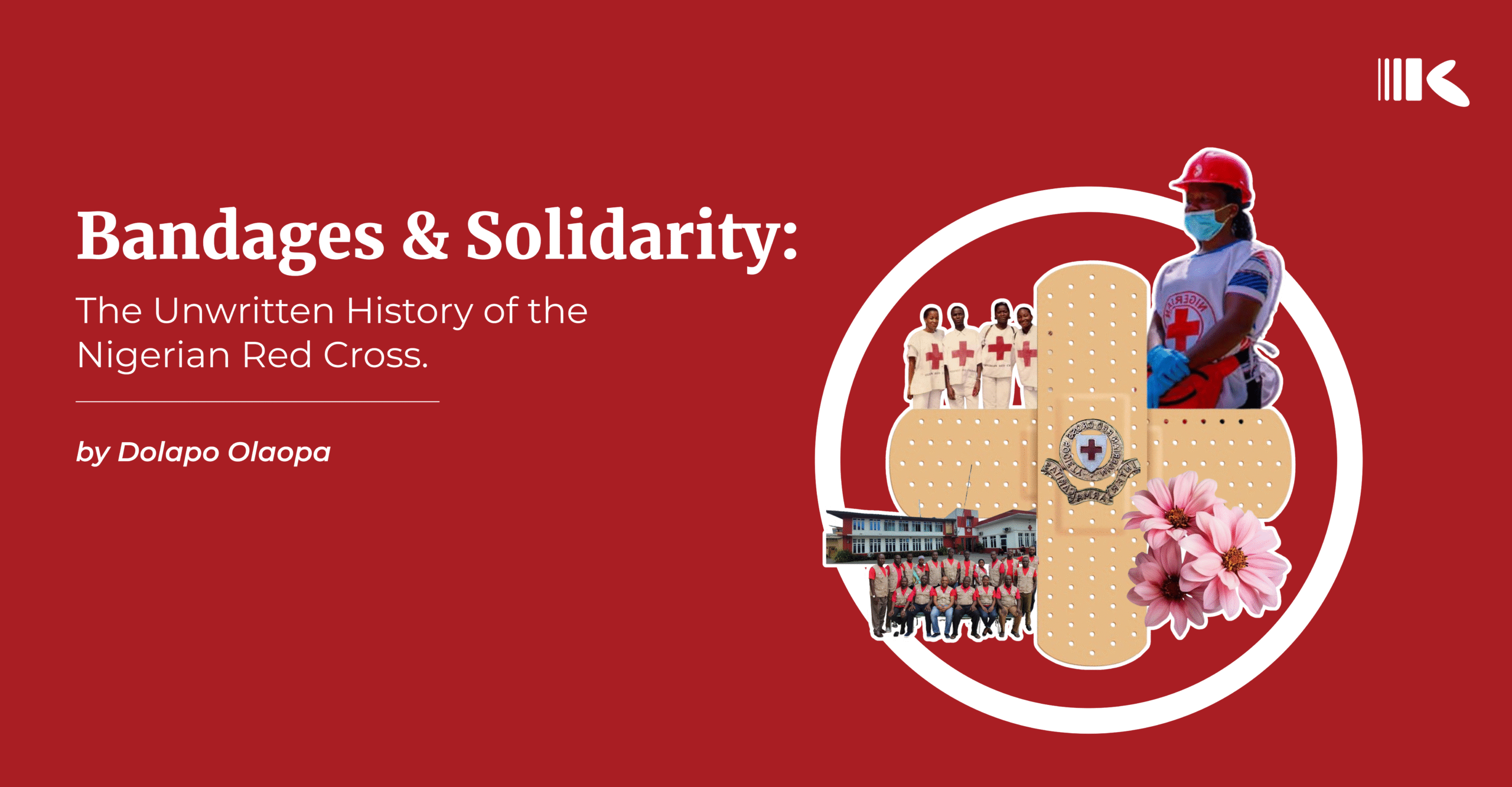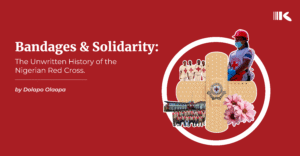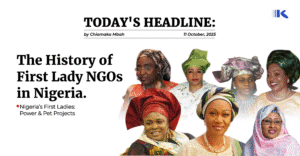The flood that claimed over 150 lives and displaced over 100 more had barely begun to recede in Mokwa, Niger State, when the first wave of red-uniformed volunteers arrived. They arrived without fanfare, bringing plastic buckets, jerry cans, sleeping mats, and shelter kits to families who had lost everything. Each household received tools to rebuild, mobile taps for hygiene, and Aquatabs to make their water safe to drink. “Clean water, proper hygiene, and shelter are not luxuries. They are lifesaving necessities,” said Abubakar Ahmed Kende, Secretary General of the Nigerian Red Cross Society. According to the Nigerian Red Cross official website, this was just one more act of service in a long and often unacknowledged history—one that has quietly shaped the humanitarian sector in Nigeria from the ground up. Who are these first responders, and what is the untold story of the institution that has been a silent guardian throughout Nigeria’s most trying times?
A quick search for “Red Cross in Nigeria” on Google reveals multiple results of Red Cross organisations in Nigeria, namely the Nigerian Red Cross Society, the Nigerian Branch of the British Red Cross, and the International Federation of the Red Cross and Red Crescent (IFRC). Still, a deeper search reveals that the first two names refer to the same organisation but with a different name at different points in their evolution, while the latter is for the global society that the national ones belong to. The history of the Red Cross in Nigeria began in 1951 with the opening of the Nigerian Branch of the British Red Cross in Lagos. This branch was made an Independent Nigerian Red Cross Society (NRCS) in 1960 when the Nigerian Parliament passed the Red Cross Act, officially establishing the society. According to the description on the about page, redcrossnigeria.org, “The Nigerian Red Cross Society (NRCS) has a storied history that began as the British Red Cross.”.
The Nigerian Red Cross Society (NRCS) was initially established as the Nigerian branch of the British Red Cross. Its pivotal moment came in 1960, when the Nigerian Parliament enacted the Nigerian Red Cross Bill into law, formally creating the organisation as an independent entity. This legislation birthed the nation’s largest humanitarian network, with a grassroot force of more than 800,000 volunteers operating in Nigeria’s 774 Local Government Areas. Legally, the Society is defined under the Nigerian Red Cross Act of 1960, CAP 324, which designates it as a Voluntary Aid Society. In conjunction with Nigeria’s adherence to the Geneva Conventions, this status forms the legal bedrock of its mission, mandating it as an auxiliary to public authorities in humanitarian efforts.
While many see the Nigerian Red Cross as a first-aid group or emergency response team, its role goes far deeper. Beyond offering immediate relief, the organisation also actively assists victims of armed conflict and other forms of violence, often working in dangerous and complex environments. At the same time, it plays a crucial role in promoting respect for international humanitarian law by advocating for its principles and supporting its integration into Nigeria’s legal framework. This dual mission positions the Nigerian Red Cross as both a responder and guardian of humanitarian values and dignity.
Seven years after being made an independent Nigerian Red Cross Society, the civil war in Nigeria threw the organisation into its most significant test yet. The brutal and complex conflict pushed the organisation beyond its traditional roles and forced it to operate at a scale and intensity beyond what it had ever done before. In collaboration with the highest body, the International Committee of the Red Cross (ICRC), the Nigerian Red Cross took on a critical humanitarian role that would define its legacy. Working in close partnership with the International Committee of the Red Cross (ICRC), the Nigerian Red Cross became instrumental in efforts to negotiate and manage neutral corridors—safe passages designed for the exchange of prisoners and the delivery of humanitarian aid to civilians on both sides of the conflict. These corridors represented the delicate balancing act the Red Cross had to perform, maintaining trust across enemy lines while upholding the core principles of impartiality and humanity.
At the same time, the organisation emerged as the primary local channel for coordinating international relief. With global attention focused on the war, aid poured in from humanitarian agencies, and the Nigerian Red Cross was responsible for distributing this assistance across highly politicised and often inaccessible areas. In doing so, it established a model for how non-governmental organisations would later operate in complex emergencies within Nigeria, bridging local knowledge with international support, and proving that humanitarian action could remain independent, even amid war. A document chronicling the first-hand account by ICRC Vice-President Jacques Freymond details the committee’s extensive, complex, and often perilous humanitarian mission during the Nigerian Civil War (also known as the Biafran War). The report concludes that despite immense political obstacles, internal organisational growing pains, and tragic losses, the operation was a monumental life saving success. It highlighted the ICRC’s unique strengths: speed, independence, tenacity, and ability to act in internal conflicts where the UN could not. The mission served as a vital, large-scale experiment in international humanitarian coordination whose lessons remain relevant for future crises.
Following the end of the civil war, the International Committee of the Red Cross (ICRC) handed over to the Nigerian Red Cross. This transition did not dissolve the institution, but transformed it into a permanent humanitarian institution. It shifted its focus from wartime relief to tackling long-term challenges in public health, disaster response, and community resilience. The NRCS pioneered initiatives such as community-based healthcare, immunisation campaigns, and later HIV/AIDS awareness programs. It also played a vital role in responding to natural and man-made disasters, providing critical support during floods, fires, and communal conflicts.
Beyond its organisational blueprint, the soul of the Nigerian Red Cross Society resides in its volunteers, the human pillars supporting its mission in every corner of the country. During the Civil War, volunteers and relief workers were the bane of the humanitarian work of the Red Cross Society. In her 2012 report “Organising the Unpredictable: The Nigeria–Biafra War and Its Impact on the ICRC,” Marie-Luce Desgrandchamps highlights how the 1968 Biafran humanitarian crisis exposed the ICRC’s severe shortage of medical staff and volunteers. Between January and July of that year, the organisation had no medical personnel in Biafra and remained understaffed across Nigeria, leaving thousands of displaced civilians without adequate aid. This challenge revived discussions proposed by Mr Petitpierre – setting up a ‘humanitarian contingent’ ready to serve in any circumstances. However, widespread media coverage of the war in mid-1968 drew global attention. It mobilised an influx of volunteers, whose involvement became crucial in sustaining relief operations, demonstrating the indispensable role of volunteerism during the Nigerian Civil War.
That legacy endures till today. From the flood pains in Mokwa, Bayelsa, to IDP camps in the North-East, the Nigeria Red Cross Society still runs on unpaid hands — students on semester breaks, artisans between jobs, retirees with time and wisdom to give, and just regular Nigerians who are dedicated to contributing to meaningful change in their society. They are the unseen architects of national solidarity, and their work reminds us that humanitarianism is not the preserve of professionals alone, but the collective inheritance of a people determined to care for one another, no matter the odds.
Whether it is helping the wounded in a civil war, providing food and health care to residents of a town displaced by insurgency, or giving immediate relief materials to victims of flooding, the Nigerian Red Cross Society is not merely a participant in history but the foundational blueprint for bandages and solidarity. Its model of neutrality, volunteerism, and auxiliary support has become the operational DNA for the entire humanitarian sector in Nigeria. The history of the Nigerian Red Cross Society is not found in the archive alone. Still, it is a living legacy found daily in the communities served, in the volunteer who wades through floodwaters to deliver a food parcel, in the first responder who kneels beside a victim on a chaotic roadside, and in the community health worker who offers comfort and care.




